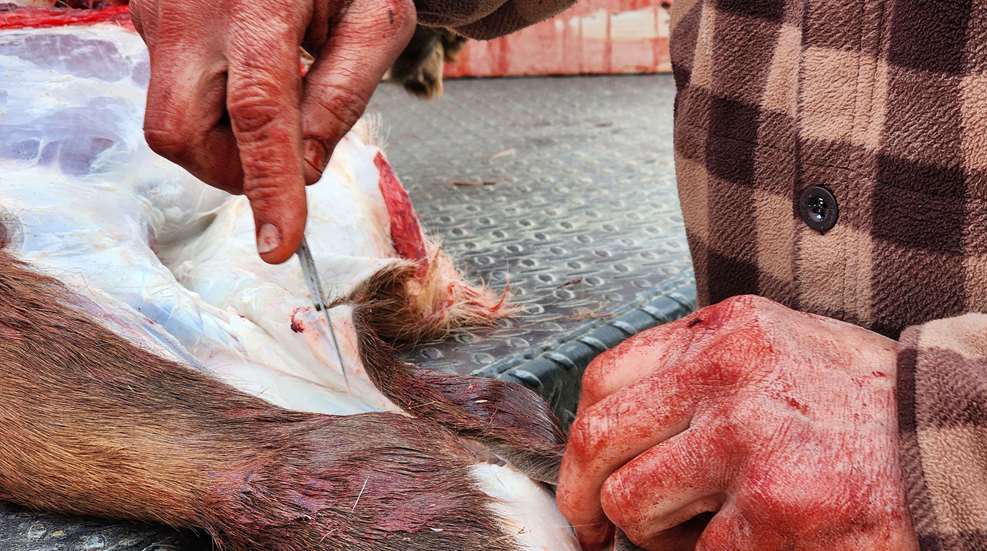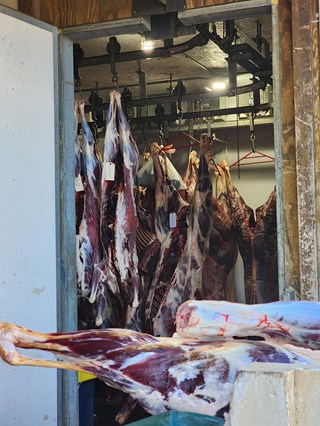
If you’re relatively new to hunting and you plan to take a harvested deer or elk to a local processor rather than butchering the animal yourself, there are a few things you need to know.

First, not all processors are created equal. I’ve heard of (but have never encountered) processors who take your animal, weigh it, and immediately hand you the equivalent amount of frozen meat from who-knows-whose deer. You do not want this type of processor! For several good reasons, you want to know that you’re getting YOUR animal back, not a mixture of multiple deer. Expect it to take from a week to several weeks to get your meat back, depending on how busy the processor is.
When you drop a deer off, the processor will likely ask you “How do you want it?” He might have a checklist you can fill out, which makes things easier. Again, not all processors do the same thing. Some are pretty basic: They do general roasts, ground meat, backstraps, tenderloins (although I recommend you remove these yourself when you’re field-dressing), maybe some stew meat and maybe some cubed steak. Some processors offer more and can identify for you specific cuts like tri-tip, sirloin steaks, round steak, different types of roasts, and a variety of processed products like smoked sausage, breakfast sausage, snack sticks and more. He might even do specialty cuts if you ask, like bone-in shanks for osso bucco or rib chops.
If your processor is sophisticated enough to offer all of that, he probably really knows his stuff, and it might be smart to tell him to just do his thing and give you all of his favorite cuts. You’ll get things you might not have tried before or things you might not otherwise receive. But if you’re dealing with a more simple operation, it’s a matter of knowing what you like to eat and cook.
I butcher my own deer, but when I have to take one to a processor (like when I’m traveling and need the meat shipped home to me), I ask for the following:
- A few roasts
- Tenderloins left whole if I haven’t already removed them
- Backstraps cut in half (so I receive four packages of frozen backstrap), not sliced into steaks or butterflied
- Lots of stew meat
- Grind the rest with no fat added
I don’t care for cubed steak, but we do eat a lot of venison stew and steak tip-style recipes that I can use stew meat for. If someone (a local hunter or my guide) can assure me that the processor’s summer sausage is really good, I might try a little of that, just because I seldom get the opportunity to have someone make it for me. There’s often a minimum order of smoked meats, so be prepared for 10 or 15 pounds of it.
If you don’t think you’ll eat roasts, tell the processor to skip those and grind them or cut them into stew meat or steaks if suitable. If you don’t like stew meat, have them grind all of that. If you make a mean country-fried steak, you might want a lot of cube steak and fewer roasts. Regarding backstraps (the filet mignon of venison), I recommend you have them kept whole or cut into family-sized pieces—not cut into medallions. You can do that later if you want to cook them that way, but leaving the backstrap in large, long pieces lets you cook it whole or do whatever you want with it when you thaw it. If your processor butterflies it into thin steaks for you, as a processor did with an antelope of mine once, much to my chagrin, you have only one real option for preparing it.
You also need to decide if you want fat (usually beef tallow or pork fat) mixed into your ground meat. Some processors will mix this in automatically if you don’t tell them not to. Ground venison is very lean, which is great for tacos, spaghetti, chili and other recipes where you’ll be browning the meat and draining the fat off (if it were beef). On the other hand, no-fat ground venison will leave you with drier meatloaf, meatballs, burgers and the like. If you tend to make more of those items, you might want fat in your meat. Another consideration is shipping costs: If the processor will be shipping the meat to you, skipping the fat will save you a little money on shipping, which is calculated by weight.
If all else fails and you just don’t know what you want, ask the processor what he recommends. He probably has a standard way he handles deer for people who aren’t particular about their cuts, and he can recommend anything he considers his specialty.















































